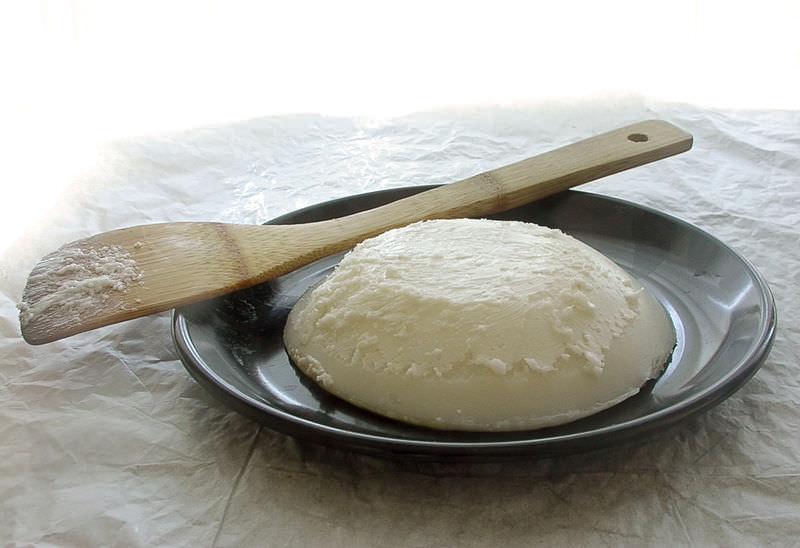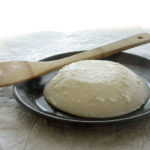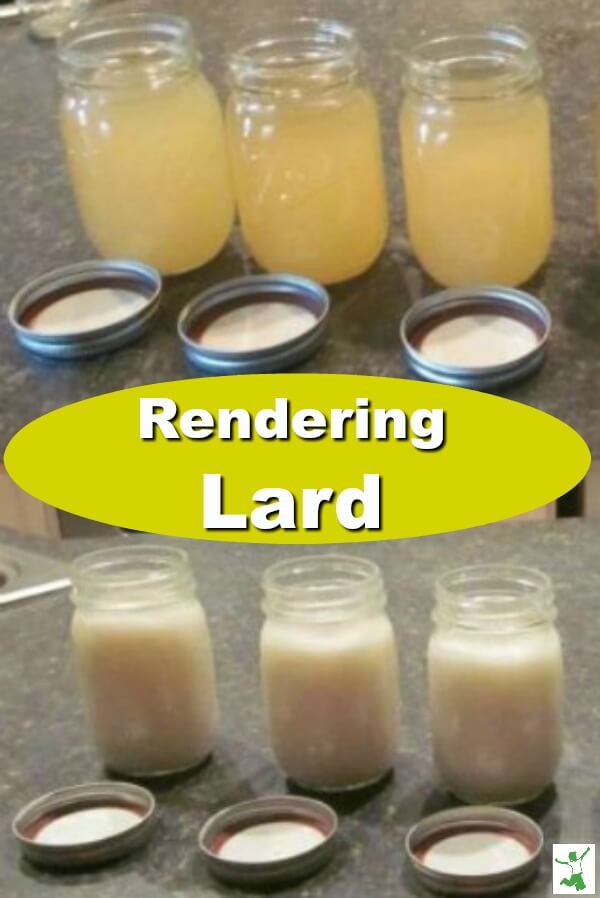Easy method to render pastured lard at home as a traditional way to add a healthy fat loaded with Vitamin D to your family’s diet.
More people are waking up to the old-time notion of how cost-effective and healthy it is to render lard.
Yes, lard!
Lard is a healthy, traditional fat from pigs that can be used to greatly enhance the flavor and nutrition of your home cooking and baking. Contrary to popular belief, lard does not make you fat. Perhaps the fact that lard is traditionally used for making pie crusts and eating too much pie will indeed make you fat is where the negative connotation comes from.
Animal fats such as chicken, goose, duck, tallow, and lard have nourished Traditional Cultures for centuries. The key is to source quality from healthy animals living in their natural environment outside.
The most nutritious and best quality lard is leaf lard, which is the fat around a pig’s kidneys. It is best to render lard once you have located a quality, pastured pig farmer in your local area. Lard contains high amounts of vitamin D when the pigs are allowed to be outside in the sunlight. Locating a source for pastured pork, then, is of primary importance to make sure you render lard of high nutritional quality.
The pork “cracklings” that are left over after rendering the lard can be placed on a cookie sheet in a warm oven overnight to dry out. They make a great snack alone or topping for salads!
Lard: A Healthy Fat Used for Millennia
Most people don’t realize that McDonald’s used beef tallow, which is very similar to lard, to fry its french fries. This all changed about 30 years ago in favor of partially hydrogenated fats which caused the unfortunate switch to these very unhealthy Factory Fats!
When I render lard, I freeze it in one-quart containers for easy storage and convenient access for cooking. One pound of leaf lard will render approximately 1 pint of lard.
Animal fat imparts valuable nutrition and wonderful flavor to roast vegetables. The reason many kids won’t eat veggies is that they are so tasteless! Roasting organic vegetables in a bit of chicken fat makes them absolutely delicious. My kids frequently ask why the veggies in restaurants are so tasteless and why the ones cooked at home are so yummy. Now you know the secret that Traditional Cultures always practiced!
Don’t Want to Make Lard?
If you decide making lard is not for you, fear not! You can buy pastured, premium leaf or pure lard. This is my preferred source.
This is a really awesome turn of events in recent years. It used to be only 10 years ago or so that you couldn’t buy unprocessed lard. You had to make it if you wanted to use it in your kitchen. Take advantage if time constraints are an issue for you in pursuing a Traditional Diet.
Beware of buying lard that isn’t a vetted source, as I’ve seen several brands in stores and online that hydrogenate the lard before packaging.

How to Render Lard
The traditional steps to render pastured lard yourself at home.
Ingredients
- 3 pounds leaf lard preferably pastured
- filtered water
Instructions
-
Remove leaf lard from the freezer. Cut up into cube like pieces.
-
Put all of the cubes of lard in a large stockpot. Add a half cup or so of filtered water to the pot so that the lard doesn't scorch or burn once you start rendering it.
-
Put pot on the stove with the cover off and turn the heat to medium to low. Stir the lard every five minutes or so as it is warming up and melting.
-
It will take quite a bit of time for the lard to completely melt and separate from the cracklings which will come to the top with the liquid lard in the bottom.
-
Strain the liquified lard through a strainer lined with a cheescloth and into a large bowl. Allow the lard to cool slightly and then pour into mason jars. Once at room temperature, screw on the lids and refrigerate. Freeze what you won't use in a few weeks.
-
The cracklings that are left in the strainer can be placed on a plate covered in a towel and left to air dry. They can be used as snacks or put on salads.
Recipe Video









I tried and the lard turned out real dark amber color. Could this because I left it in the pot for too long? Is it burnt? I assume if it is burnt, then I should throw it out? I have a huge pot of this questionable lard, and appreciate anyone please advise!
It should be light colored. If it’s dark, sounds like it got burned. 🙁
Yay! I am rendering lard as I write. I am so glad I saw your video, I was buying ‘lard” from the Amish Farm we get our raw milk. But it was dark and tasted like bacon. I thought for a while it might be the bacon drippings. Now I know for sure it wan’t real Lard. So I finally found a meat butcher who sells the pure pork fat and suet for tallow or only a dollar a pound!
Love your information!
THanks BJP
Hi Sarah,
I have a question about re-using lard, or tallow. Can I strain, refrigerate it and then re-use the lard I used to fry chicken wings in again and again? It’s hard to imagine that traditional people had an endless supply of these wonderful fats and threw the away after each time they used them. What is YOUR rule of thumb when it comes to healthy, God given saturated fats….including coconut oil for that matter. Do you re-use them?
Thanks; Love your blog!
Lynda
I have the same question about re-using lard. Thank you so much Sarah for your blog and helpful responses!
Thanks for the info on lard! My question is when we get our lard before it is rendered how long can it stay in the freezer? Or where is the best place to store it? We raise our own pasture pigs and I will have a lot of Lard?? And also raise our own beef? Is tallow stored the same?
Thanks a ton!!!
Cari
What is the texture of the cracklings like? Mine seem to be a bit soft, even after drying them in the oven. Is that okay?
Thanks!
Wallace Farms is in Iowa and they deliver to my area here in Illinois. They sell 4 lbs of lard for $10. I asked to see if they had rendered it and did it contain hydrogenated oils and the response was, “just wonderful clarified pork fat!” Does this mean it is ready to cook with? Love your site!
What is the brick of lard in the oil isle at the grocery store? Acceptable or not? I’ve asked every butcher in town about buying lard and they all walk me to the “brick” on the shelf. The good news is, with many Indian Food stores where I live, I can find Ghee everywhere for a great price.
Thanks everybody for all the great comments in addition to Sarah’s posts. They too, are helpful for us newbies.
Julie
Julie, the lard on the shelves in my stores is always hydrogenated, or partially hydrogenated…not good.
Hi Sarah
I hope these are not silly questions however why do you render lard or clarify butter. What are the advantages of doing this over cooking with straight lard or butter. Should you do this with all animal fats ie beef and duck?
Thank you again for such an amazing site. It has helped my family so much.
Lara
Hi Lara, you render lard to get lard. Without rendering it, you have no lard as its bound up in the tissues of the pig and you have no oil by itself to cook with. Making ghee (clarified butter) removes all the milk solids leaving only the butter oil which has a higher smoke point for cooking (the milk solids can burn if you use butter for cooking) and also many folks allergic to butter have no trouble which ghee.